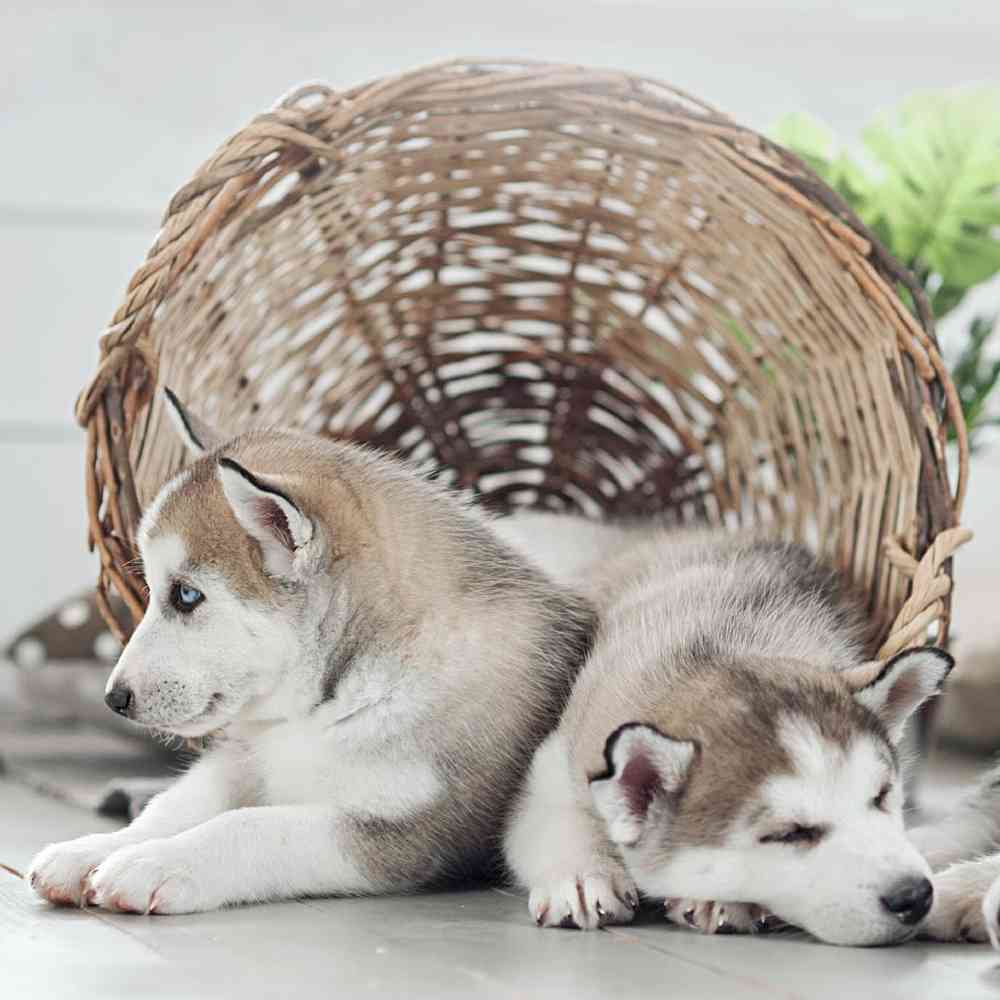Alaskan Malamute

An immensely strong, heavy-duty worker of spitz type, the Alaskan Malamute is an affectionate, loyal, and playful but dignified dog recognizable by his well-furred plumed tail carried over the back, erect ears, and substantial bone.

Want to know more about Alaskan Malamute ?
Breed Traits
Clubs, Registries & Associations
American Canine Association Continental Kennel Club Universal Kennel Club International American Kennel Club United All Breed Registry America's Pet Registry, Inc. United Kennel Club (Based on breed recognition. See store for details on this particular puppy.)
Group
Heritage
Description
Health Awareness
Personality
Exercise/Energy Level
Did you know?
Assisted Rear Admiral Richard Byrd during his expedition to the South Pole. Served as a search and rescue dog in World War II Greenland. Aided prospectors and settlers during the Klondike Gold Rush in 1896
General Appearance
The Alaskan Malamute, one of the oldest Arctic sled dogs, is a powerful and substantially built dog with a deep chest and strong, well-muscled body. The Malamute stands well over the pads, and this stance gives the appearance of much activity and a proud carriage, with head erect and eyes alert showing interest and curiosity. The head is broad. Ears are triangular and erect when alerted. The muzzle is bulky, only slight diminishing in width from root to nose. The muzzle is not pointed or long, yet not stubby. The coat is thick with a coarse guard coat of sufficient length to protect a woolly undercoat. Malamutes are of various colors. Face markings are a distinguishing feature. These consist of a cap over the head, the face either all white or marked with a bar and/or mask. The tail is well furred, carried over the back, and has the appearance of a waving plume. The Malamute must be a heavy boned dog with sound legs, good feet, deep chest and powerful shoulders, and have all of the other physical attributes necessary for the efficient performance of his job. The gait must be steady, balanced, tireless and totally efficient. He is not intended as a racing sled dog designed to compete in speed trials. The Malamute is structured for strength and endurance, and any characteristic of the individual specimen, including temperament, which interferes with the accomplishment of this purpose, is to be considered the most serious of faults.
Size, Proportion, Substance
Head
Hindquarters
Coat
Color
Gait
Temperament
Additional Information
Disqualifications
About
The Alaskan Malamute stands 23 to 25 inches at the shoulder and weighs 75 to 85 pounds. Everything about Mals suggests their origin as an arctic sled dog: The heavy bone, deep chest, powerful shoulders, and dense, weatherproof coat all scream, “I work hard for a living!” But their almond-shaped brown eyes have an affectionate sparkle, suggesting Mals enjoy snuggling with their humans when the workday is done. Mals are pack animals. And in your family “pack,” the leader must be you. If a Mal doesn’t respect you, he will wind up owning you instead of the other way around. Firm but loving training should begin in early puppyhood. That said, a well-behaved Mal is a joy to be with—playful, gentle, friendly, and great with kids.


